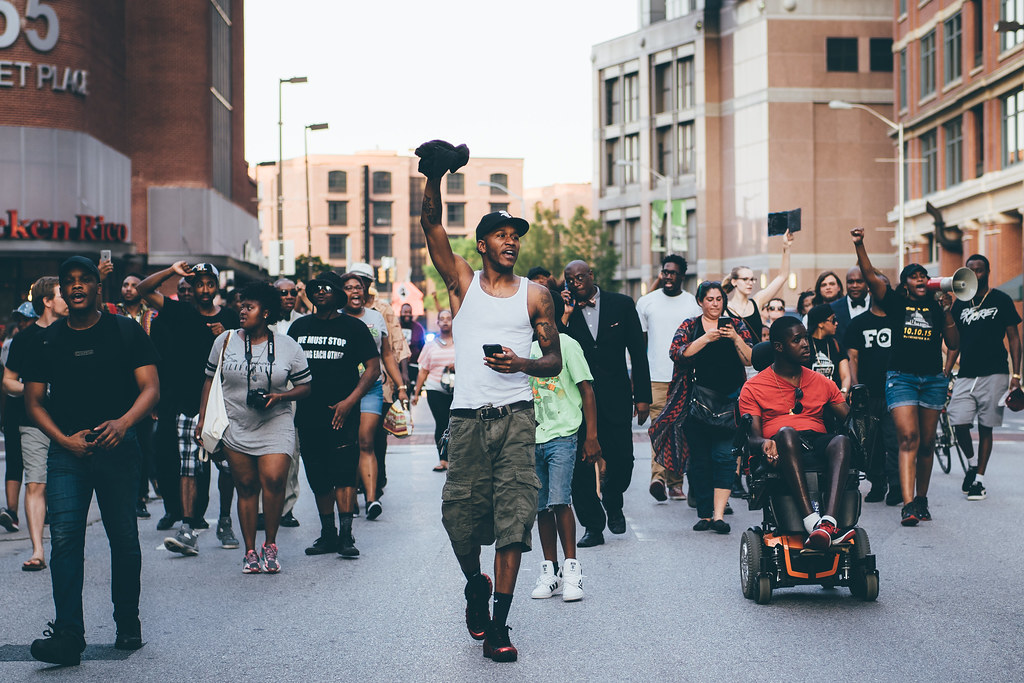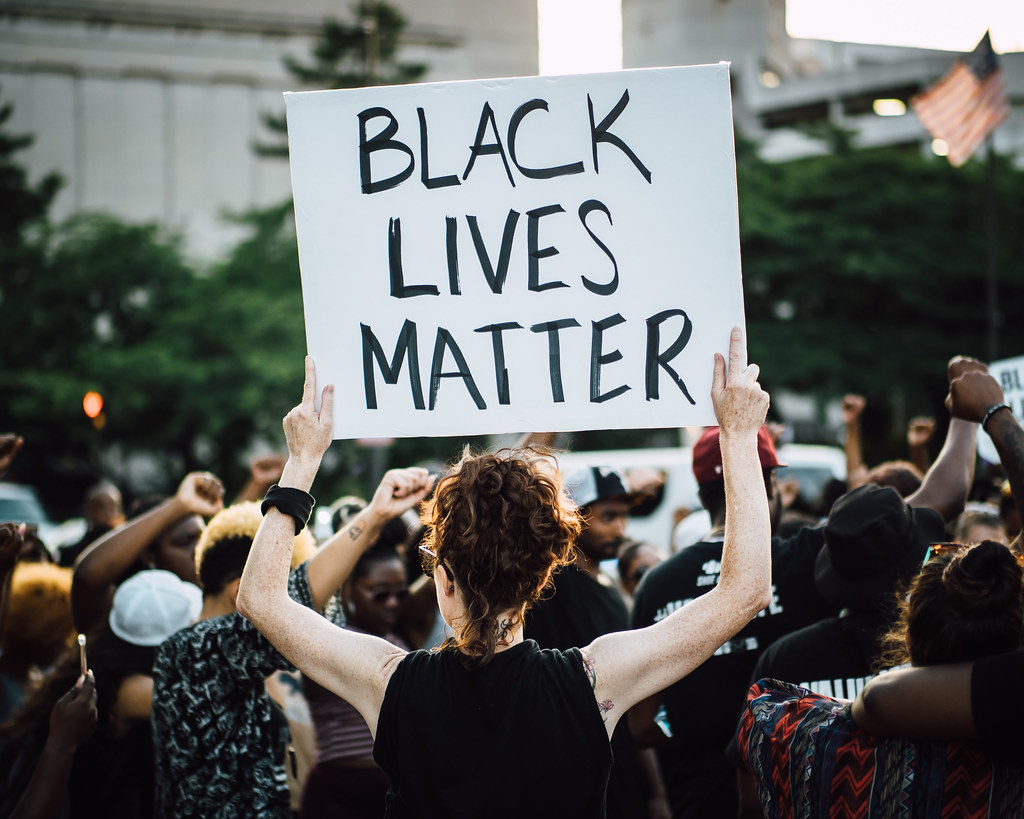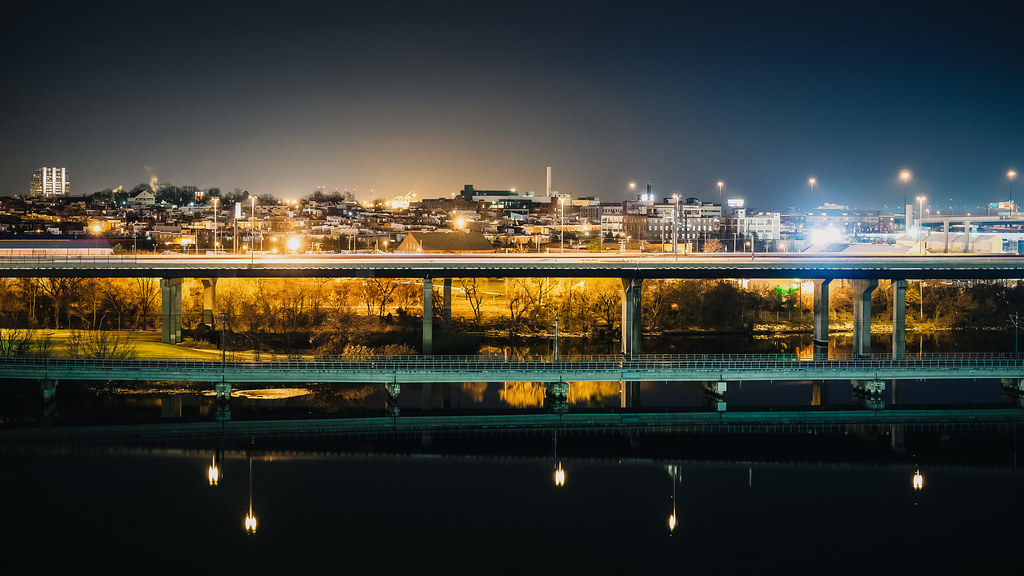I've been sitting on this post for a couple weeks now. In general, I've avoided covering the
Black Lives Matter movement because I did not recognize it as my narrative. Since my home town, Baltimore City, broke into a riot last year, I felt compelled to photograph what was going on, but restrained myself from injecting what I construed as my "spin" on the narrative as it was forming. As a white man, surely my perspective on a movement very much centered around the experience of growing up black in America would be tainted by the very different experiences I've had in life.
The narrative of Black Lives Matter has, nonetheless, been commandeered by many parties, and its core message distorted by players both outside and within the movement. At the moment, it feels as if it is balanced on the knife's edge, with a stubbornly deaf resistance among those who should be allies contributing to outbursts of violence from unstable actors. With the variety in the black experience in different regions of America, no single narrative sufficiently defines the movement, but that fact does not restrict ratings-hungry 24-hour news cycles from generalizing through out-group heuristics (and it especially does not restrict the presumption of meme-regurgitating Facebook junkies).
Instead of pontificating philosophically on my impression of the movement, its accomplishments or agenda, I will simply describe my experience of it as a Black Lives Matter march figuratively "fell into my lap" on a casual outing to Baltimore with my friend Kevin, a black man whose upbringing (I perceive) to be very similar to mine in regard to opportunity, but as I would discover that evening very different for no reason other than race (a discovery that remains stark and sobering in my understanding of what it is to grow up black in America).
We originally rode into Baltimore to explore the curiosity that is the annual
BronyCon convention hosted by the
Baltimore Convention Center. While not necessarily aligned with our fringe interests, it seemed at least tangentially related and worth checking out. Our arrival wasn't at the most opportune hour, however, and much of the activity we anticipated was still hours out, at best. We spent our time photographing the architecture of the convention center itself more so than the anatomy of the convention.
Idly standing on the third floor trying to decide what to do, where to go, we stood entranced with the mob of sports fans flooding out from Camden Yards, the neighboring baseball stadium. On its own, the opposition of these disparate crowds from one another, the Nerds vice the Jocks, was akin to magnets of opposite polarity, a strange sort of social study from our birds eye view. And then Kevin noticed a third player to this equation, a body of people marching down the center of Pratt Street, the one-way thoroughfare of Baltimore's Inner Harbor - a Black Lives Matter march, comparatively puny in size, but far more demanding of attention than either aforementioned crowd. I hesitated, but Kevin seemed all for injecting ourselves into the march, to be a part of a very unique and influential happening, literally right outside the door. Whether it was right or not for me to have this feeling, I construed his interest in engaging the march as a sort of permission, without which I would have never dared to touch a narrative I considered forbidden.
It was a rush from the onset, although not for the expected reasons. The stern march of the body of protest was a challenge to keep pace with, myself and Kevin frequently leapfrogging one another to get ahead of the demonstration as it marched down Pratt, re-positioning ourselves in 100-foot sprints. Periodically, we found ourselves avoiding police traffic, as cruisers rolled past with lights and sirens, not to stop the protesters but rather to close down intersections down their path. Confrontation was not a thing on my radar.

Reaching the end of Pratt where it intersected with Presidents Street, a police lieutenant stepped forward from a modest barricade of police cruisers and accosted the man who clearly organized the march, a black man who looked to be in his mid-30's brandishing a megaphone. With the march halted at the corner of this intersection, Kevin and I drew tighter into the group, and I incidentally found myself keeping tight with the organizer as the lieutenant leaned in to speak to him. Their conversation was brief, but it was clear to me that the intended route of the march was communicated, and the lieutenant quickly passed the word along via radio. Police cruisers disbanded and relocated to an intersection farther up Presidents Street, and the march continued northward toward the blockade stopped just before the I-83 ramps.
As the march continued north, I was pulled aside from a woman who seemed to be in close communication with the leading organizer. She requested I photograph the group beneath the "Year of the Black Man" sign advertising an exhibition at the local
Reginald F. Lewis Museum. The PR potential of the moment in context was not beyond me, and I complied with a smile and promptly shared the image online, imagining that to be the end goal intended. Upon reaching the blockade, the march quickly shifted west down East Baltimore Street, then north up Commerce Street before a final turn eastward down Fayette and back toward I-83. Every step of the way, for each turn, police promptly set up blockades a few blocks ahead of the march.


The blockade at the end of Fayette before the I-83 ramps was different than the fluid and mobile blockades of police cars. A line of beat police stood shoulder to shoulder while officers behind them collected steel railings to close off the street with a physical barrier. The night prior, a similar protest (larger in size) had congested I-83 traffic, and police were clearly interested in avoiding a repeat of that event. None of the marchers I focused on grew confrontational, and the police insisted the blockade was a measure to ensure no one was injured by traffic bound for or departing the highway. Things seemed to stall for some time at this position, the demonstrators clearly interested in continuing forward, but police clearly unyielding. Hands were joined a few times in prayer at this point, prayers for several black men killed by police whose names have commanded the news this past year, and also prayers for the police officers killed in Dallas, TX that very week. At the most tense moment, a line of demonstrators joined hands in a mirrored line up against the line of police, and I am unsure what words may have been exchanged. Eventually, the organizer broke the stand, and the march turned back westward, reportedly as far as Martin Luther King Jr. Boulevard prior to disbanding. Kevin and I stopped following the march after the stall at Fayette and Presidents Street.


Exhausted from keeping up with the march, we ducked into a local pizza shop of popular note, Joe's Squared, to share a bite and a beer. At this point we touched on our differing experience of the protest. Through my lens (as in the lens of my experience), I was impressed with the communication and organization between protesters and police, perceiving each blockade as a safety measure for the benefit of the march up until the mild stall of confrontation just before we broke from the march. It struck me as a positive event, a healthy demonstration of civil disobedience that lacked any aura of pending conflict. Kevin, meanwhile, described being terrified that at a moment's notice he would be subdued along with the marching body, and that each blockade was not a safety measure for the benefit of the demonstrators but a control measure designed to herd and manage a rebellious body.
I was surprised by the disparity in our experiences. Kevin and I are extremely similar people, with similarly advantaged parents who afforded us a privileged upbringing. We've grown into similar hobbies because we're similarly dorky guys. But whereas I felt the freedom to rebel against authority when I felt at conflict with its execution upon me, Kevin has always been afraid of what could happen to him should he ever fall out of line. When police harassed me for photographing in public spaces, acting completely within my rights, I rebelled by adopting urban exploration as my muse - If I was to be harassed for photographing anyway, I would pursue photography in which the consequences of authority were at least warranted. It was not a threat to the sanctity of the privilege to which I'd grown accustomed. Kevin, however, had cultured himself into an anxious wreck to remain within the boundaries presented to him by authority, lest the benefits and opportunities of his upbringing be put at risk,
or worse.
My direct peer, a friend, whose experience of the world had been so similar to mine, yet by virtue of race, I was afforded the freedom to rebel while he remained bound by the excruciating stress of conformity and complicity. I would not survive within the confines such a social framework.
We returned to BronyCon for a last look at events, quickly tired of the crowd and returned home. I felt we'd touched on an important topic, but only just barely. More than any other signs being brandished by demonstrators in the march, "White Silence is Violence" stood out to him as the most powerful. And I'm compelled to agree.
My experience of the Black Lives Matter movement more completely cemented my shifting understanding of the role of race in the American social contract. Particularly in my brief discussion with Kevin, race alters perception because white-normative Americans will interact with non-white Americans differently, no matter how great their opportunities are, no matter how rich their privilege. Between Kevin and I, all things being nearly the same, I am free to rebel with a sympathetic audience, a freedom he will never have without frank and candid conversation about race and its social impact.
I take that away as the end goal of Black Lives Matter. To not deny the issue under guise of being "above" it (a la All Lives Matter, and every person to say "I don't see race/color"). To face the discomfort of the topic and learn that to embrace diversity is not to normalize it in the context of the majority race's experience. Face the discomfort, deal with the awkwardness.
Start the conversation.
















